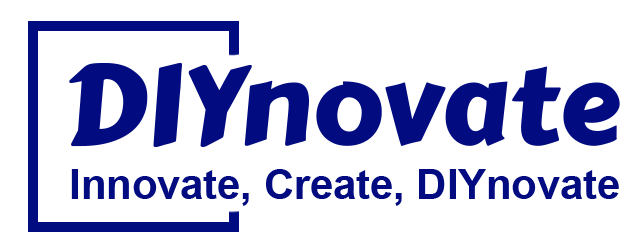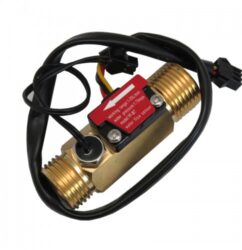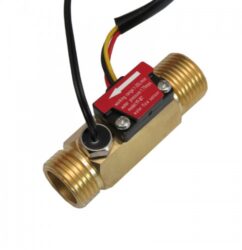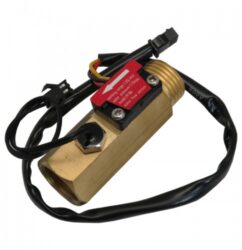- 3D Printer
UPS SERVICE
Shipping & ReturnsSTORES
Find retail locationsFREE SHIPPING
For orders above €100
CUSTOMER CARE
For All Your Questions
- Wireless & IOT
UPS SERVICE
Shipping & ReturnsSTORES
Find retail locationsFREE SHIPPING
For orders above €100
CUSTOMER CARE
For All Your Questions
- Sensors
UPS SERVICE
Shipping & ReturnsSTORES
Find retail locationsFREE SHIPPING
For orders above €100
CUSTOMER CARE
For All Your Questions
- Modules
UPS SERVICE
Shipping & ReturnsSTORES
Find retail locationsFREE SHIPPING
For orders above €100
CUSTOMER CARE
For All Your Questions
- Microcontroller Unit (MCU)
UPS SERVICE
Shipping & ReturnsSTORES
Find retail locationsFREE SHIPPING
For orders above €100
CUSTOMER CARE
For All Your Questions
- Development Boards
UPS SERVICE
Shipping & ReturnsSTORES
Find retail locationsFREE SHIPPING
For orders above €100
CUSTOMER CARE
For All Your Questions
Step 4: Setting Up Your First 3D Print: A Step-by-Step Guide
Introduction
3D printing can be intimidating for beginners, but once you understand the setup process, it becomes much easier. In this guide, we’ll walk you through the essential steps to prepare and execute your first successful 3D print.
Step 1: Choosing Your First 3D Model
- Use a simple and small model to test your printer, such as a calibration cube or a basic figurine.
- Download models from platforms like Thingiverse, Printables, MyMiniFactory, or Cults3D.
- Ensure the model is in STL or OBJ format, the most commonly used file types for 3D printing.
Step 2: Preparing the Model in a Slicer
A slicer is software that converts a 3D model into a format your printer can understand (G-code). Popular slicers include:
- Ultimaker Cura (Beginner-friendly and free)
- PrusaSlicer (Optimized for Prusa printers)
- Simplify3D (Paid, but offers advanced features)
Key Slicer Settings for Beginners:
- Layer Height: Standard is 0.2mm (higher for speed, lower for detail).
- Infill Density: 20% is a good starting point for general prints.
- Print Speed: Around 50 mm/s for balanced quality and time.
- Supports: Enable if your model has overhangs greater than 45 degrees.
- Bed Adhesion: Use a brim or raft to prevent warping.
Once configured, export the file as G-code and save it to an SD card or send it to your printer.
Step 3: Preparing the 3D Printer
Bed Leveling
A properly leveled print bed ensures your first layer sticks well and prints correctly.
- Manual Leveling: Adjust the knobs under the bed so that a sheet of paper can slide between the nozzle and bed with slight resistance.
- Auto Bed Leveling: If your printer has this feature, follow the on-screen instructions.
Filament Loading
- Preheat your printer to the filament’s recommended temperature (e.g., 200°C for PLA, 240°C for ABS).
- Insert the filament into the extruder and push it through until it extrudes cleanly from the nozzle.
Step 4: Starting Your Print
- Insert the SD card into the printer (or send the file via USB/Wi-Fi if supported).
- Select your G-code file and start the print.
- Monitor the first few layers to ensure good adhesion and adjust settings if needed.
Step 5: Troubleshooting Common Issues
- Print isn’t sticking to the bed? Increase bed temperature, clean the bed, or use adhesive solutions like a glue stick.
- No filament coming out? Check for clogs and ensure the filament is loaded properly.
- Warping? Use a heated bed and proper adhesion techniques.
- Messy first layers? Relevel the bed and adjust Z-offset settings.
Step 6: Post-Processing the Print
Once your print is complete, carefully remove it from the bed and clean it up.
- Remove supports (if used) with pliers.
- Sand rough edges with fine-grit sandpaper.
- Paint or smooth the surface using techniques like acetone vapor smoothing (for ABS) or primer/paint (for PLA).
Final Thoughts
Setting up your first 3D print is an exciting milestone! By following these steps, you’ll be on your way to printing more complex models with confidence. In the next guide, we’ll dive deeper into troubleshooting common printing issues to help you refine your skills.




